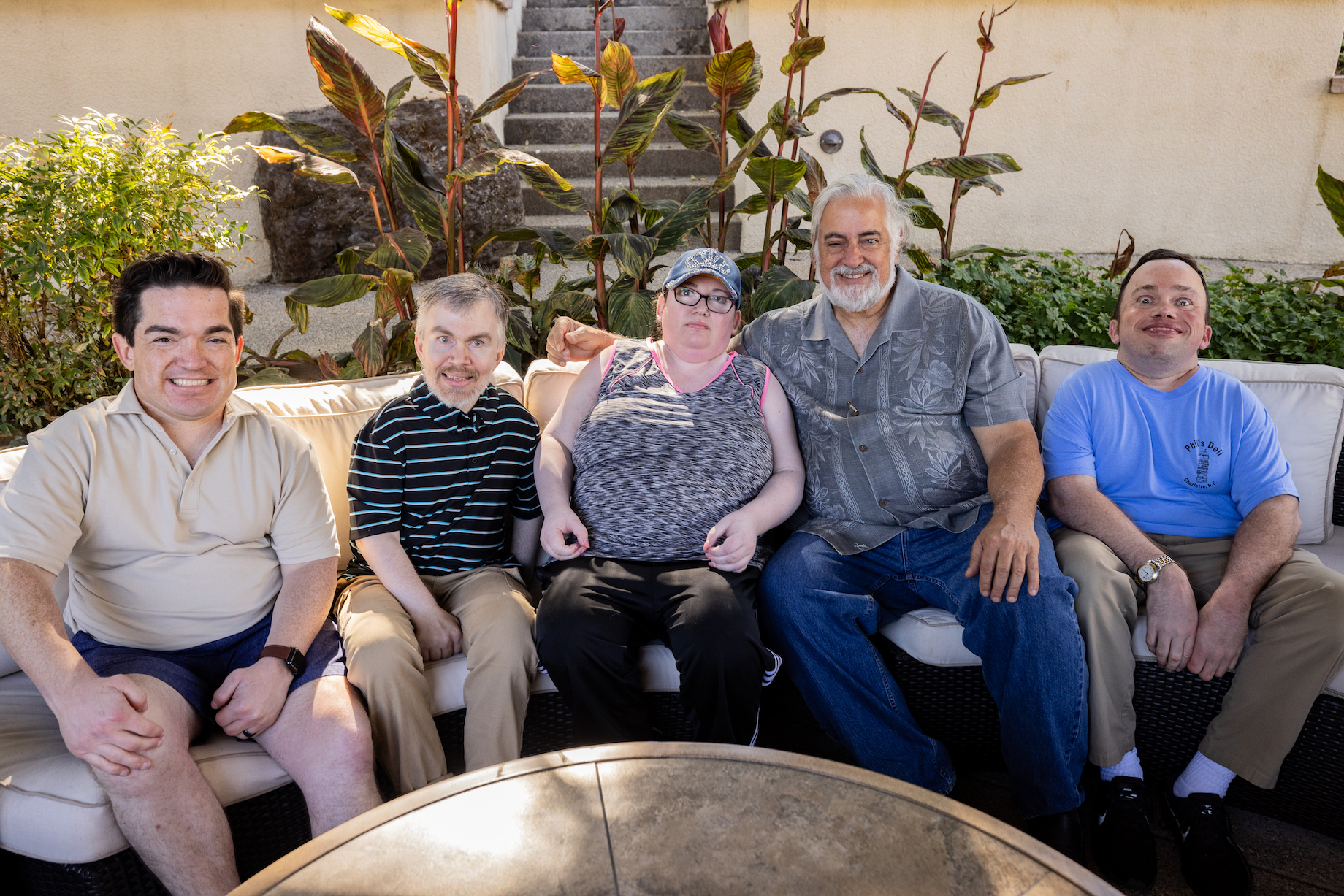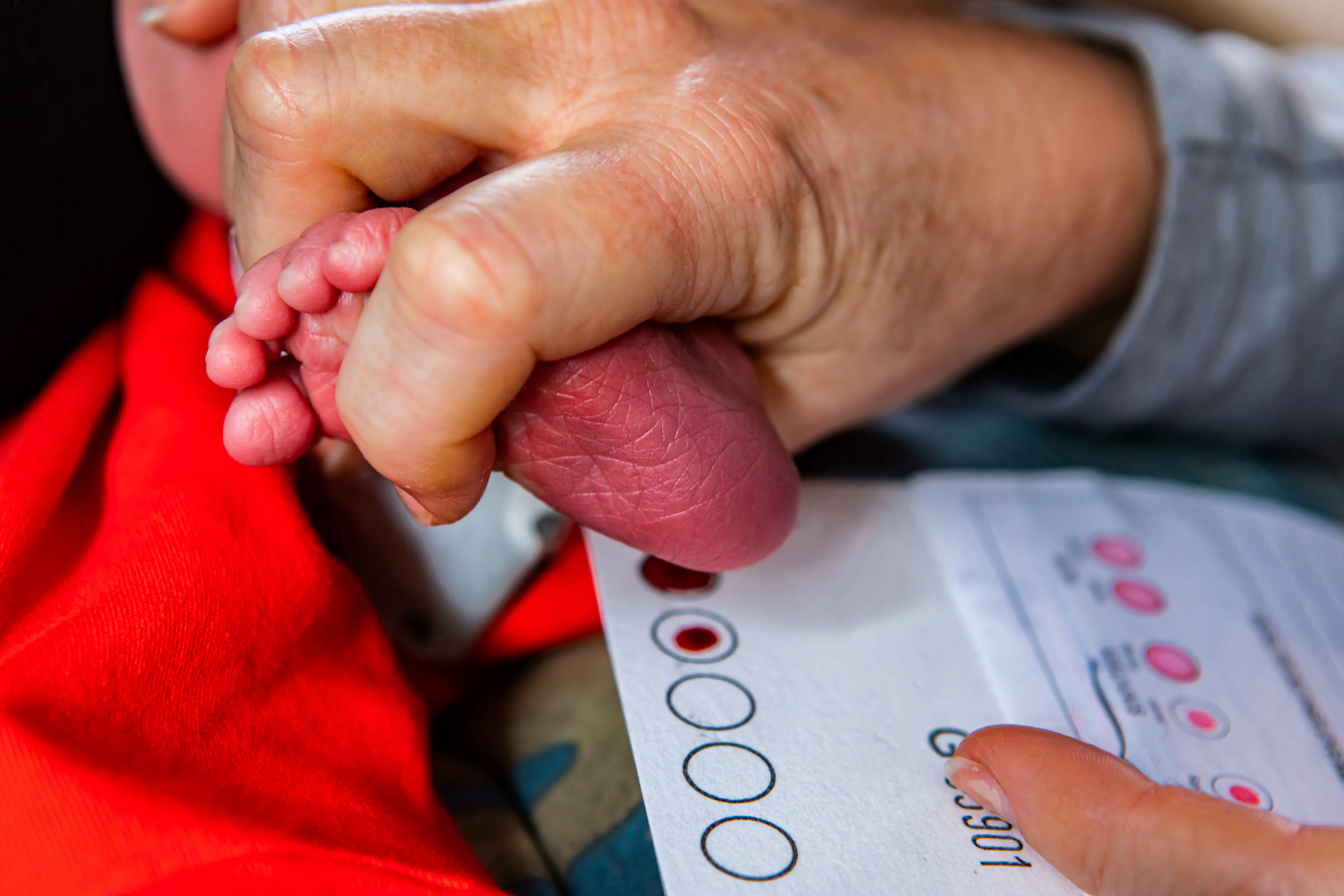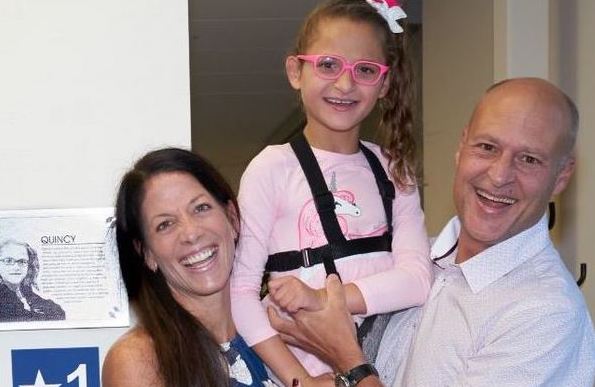This month, a one-of-a-kind reunion took place that was as heartwarming as it was exceedingly rare. Several of the adults at this event were diagnosed with a fatal childhood disease back in the 1990s – it was mucopolysaccharidosis type I (MPS I), an ultrarare disease for which there were no approved treatments.
The first-ever clinical trial for MPS I was successfully completed in 1998, thanks to the incredible resilience of these trial participants, the advocacy of their families and the dedication of the scientists and researchers involved. The medicine became the first approved treatment for MPS I and has changed the future for every child diagnosed with this disease for generations to come.
These pioneering families, researchers and scientists gather together to mark major anniversaries, and the 25-year reunion held this month was especially joyful. The event felt like a family reunion, and the closeness felt among the group was obvious as they looked at old photographs and reminisced. Here are a few of the stories shared by those present at the reunion:
I thought I’d never see them again.
Some of the original team members present included production lab staff, clinicians and others who supported the clinical trial. Susie Okazaki, who was the physical therapist responsible for assessing participants’ range of motion before and after treatment, ran into one of the now-grown-up participants at the hotel days before the reunion. “I immediately recognized him,” she said, and they reminisced about his love of Motown music as a child. “I remember his favorite song was ‘Have You Seen Her’ by the Chi-Lites.”
As Susie talked about the trial, more memories came flooding back, and she shared how one young girl participating in the study just wanted to be able to brush her own hair. “This is just an amazing day, because I thought I’d never see them again,” she said with a smile, gesturing to the group gathered around.
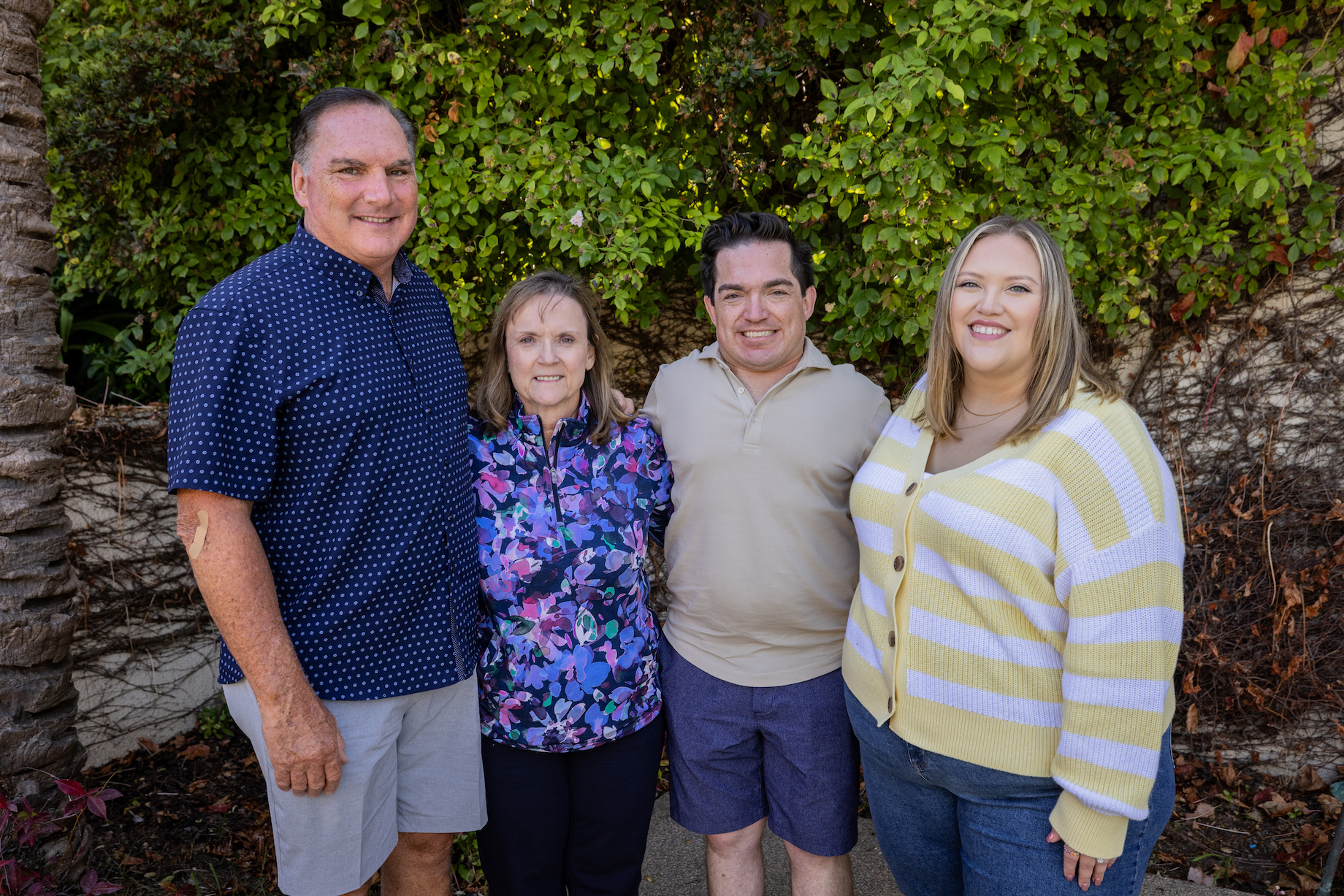
PHOTO: (L to R) Mark Dant and Jeanne Dant pose with their son Ryan Dant and his wife Silvia Dant during the celebration
There’s an overwhelming sense of joy at these reunions, because we all know how much change has been brought to so many because of these kids and these families.
In 1991, Mark and Jeanne Dant learned their athletic and energetic son Ryan was diagnosed with MPS I. When Mark asked what potential treatments were on the horizon, “the doctor said, ’There aren’t any treatments and there won’t be any,’ that was the reality at that time.” The Dants founded the Ryan Foundation and began raising money with the belief that one day they would be able to fund research into a treatment. “We started our little foundation and we thought, ‘this probably won’t come in time for Ryan,’ but look what has happened.”
Eventually, Mark met Dr. Emil Kakkis, who was researching a potential treatment for MPS I. With support from the Ryan Foundation and with Ryan himself as inspiration, Dr. Kakkis and his team developed the enzyme replacement therapy that would save Ryan’s life. In 1998, as a participant in the Phase 1 clinical study, Ryan was among the first ten people to receive the treatment.
At the 25-year reunion, Mark thought about the times when all the families participating in the trial stayed at the same hotel. “I remember walking over to one of the other rooms, and kids were jumping on the bed as high as they could. I thought, ‘When I first met her, she couldn’t walk very well, now here she is jumping on the bed, laughing!’”
Ryan also shared the moment when all the hospital visits, blood draws and infusions felt like they were finally paying off. “After starting the treatment, I was playing in little league baseball games again and keeping up. I thought, ‘Wow – it’s actually working!’ Before the trial, I was wearing gloves with Velcro on the bat and the gloves, and I didn’t need those supports anymore.”
It’s amazing to see how far life has gone for us.
Told he wouldn’t live past 10 years old, Ryan has gone on to graduate high school and college, have a career and get married. He and his wife Silvia recently purchased a home. These life events seemed impossible for someone with MPS I just years ago. “Who would have thought 25 years ago that we [the trial participants] would be going wine tasting together in 2023? It’s amazing to see how far life has gone for us.”
Mark added, “There’s an overwhelming sense of joy at these reunions, because we all know how much change has been brought to so many because of these kids and these families.”
Mark and Jeanne Dant continue to lead the Ryan Foundation and, until recently, Mark chaired the EveryLife Foundation for Rare Diseases, a nonprofit organization founded by Dr. Kakkis with a focus on advocating for improved policies to accelerate the development of rare and ultrarare disease medicines.
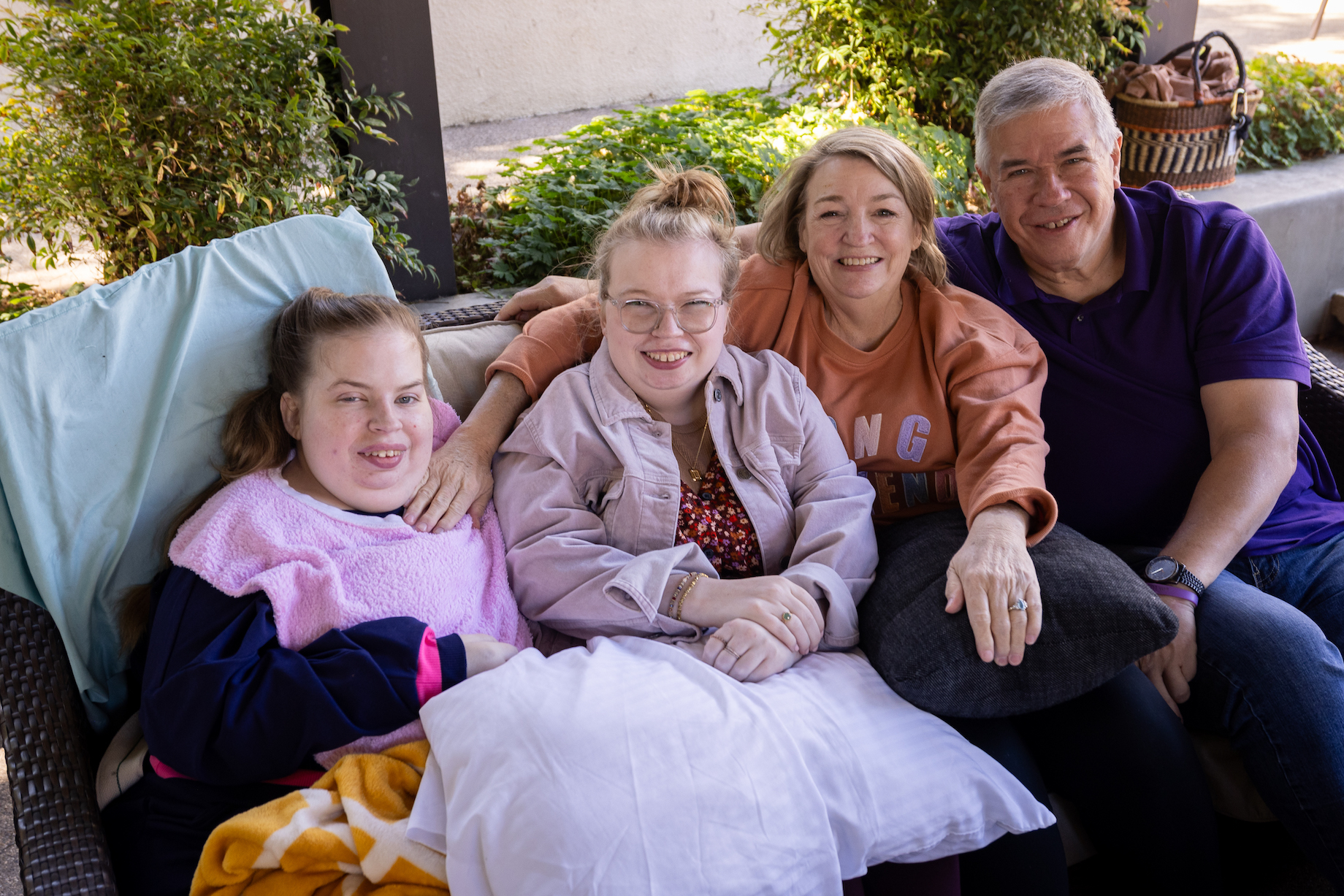
PHOTO: (L to R) Madison and Laynie Holland with their parents Amy and Steve Holland
When we get together, it’s like seeing family.
Over a period of just a few weeks in 1994, Amy and Steve Holland learned all three of their children – Spencer, Madison (“Maddie”) and Laynie – were diagnosed with MPS I. “We just threw ourselves at it,” said Steve, recalling how he and Amy had to become experts at this little-known condition in a race against time. “In those days, we were evaluating bone marrow transplants as an option, but there were no matching donors,” recalled Amy. “And just as that door closed, Dr. Emil Kakkis was starting up the enzyme replacement therapy trial.”
Spencer Holland (eight years old at the time) had an attenuated form of the disease and was a good candidate for the initial trial. Amy recalled, “We talked with Spencer about the trial and he asked, ‘If I do this, will it help Maddie and Laynie?’ He was doing it for them – he wanted to make it easier for his sisters.”
Spencer was accepted into the initial Phase 1 clinical trial in 1998, while his sisters had to wait longer to access the treatment. “It was hard to see Spencer getting better while our two daughters continued to decline,” said Steve. Maddie and Laynie both participated in the placebo-controlled Phase 3 clinical trial in 2000, with one of them receiving the drug while the other first received the placebo before being transitioned to the medicine. Their story highlights the critical importance of timely access to treatment, since their children all began therapy at different times.
At the reunion event, Amy also recalled staying together with other families during the trial. “I remember the hotel had curvy sidewalks all around and we would sit outside in the evening while the kids played together on the grass and scooted around in little toy cars. We were a little neighborhood, a community that really understood what each other were going through.”
Amy said they always look forward to these gatherings. “We’ve really kept in touch with each other, and when we get together, it’s like seeing family.” Steve added, “It’s also a time of remembering and celebrating the lives of those who are no longer with us.” While their son Spencer was doing well on the MPS I medicine, he tragically died of an unrelated medical accident. He was proud of his contributions to science on behalf of the MPS community, and his family remains proud of him.
Steve and Amy joined the board of directors for the National MPS Society in 1998 and became champions for newborn screening to ensure infants are diagnosed quickly and can begin treatment before irreversible symptoms set in.
…But it’s also a cautionary tale.
For his part, Emil D. Kakkis, M.D., Ph.D., seemed happy to just enjoy the time with his former patients, their families and his former colleagues, eating barbeque and sharing stories. But when prompted to give a speech for the 60 or so people gathered, he was quick to share a heartfelt message of appreciation to everyone who touched the project.
After toasting each of the clinical trial participants by name, in order of their first dose, he remarked how the families of these patients played a huge role in the drug getting approved. “You changed the future for MPS I. Now, there are over 1,000 kids treated in more than 60 countries, and it opened the door to several other MPS diseases getting treatments.”
When reflecting on the last 25 years and this most recent reunion, Dr. Kakkis said, “These reunions are about celebrating, but also recognizing the incredible challenges we collectively overcame to get this drug to patients are still challenges today. So, it’s a joyful day and we’re thankful this medicine changed so many lives. But it also a cautionary tale.”
Dr. Kakkis has long advocated for FDA and other regulatory agencies to adopt biomarkers as more appropriate endpoints for rare genetic diseases. Unlike clinical endpoints, which measure downstream effects of the disease (such as ability to walk), validated biomarkers can signal disease activity (for instance, through a blood test) before the onset of irreversible symptoms. Dr. Kakkis and other researchers have validated a biomarker for MPS diseases that can indicate a drug’s effectiveness before the downstream impacts of the disease would be clinically apparent.
An initial FDA review team agreed to a biomarker-based endpoint for the MPS I therapy, but a personnel change at FDA led to a reversal of that decision. Dr. Kakkis and his team were obligated to run a traditional trial using clinical endpoints. The added time and expense of this type of study design makes it highly unlikely that other biotech companies will come forward with competing products to improve on the treatment.
“After 25 years, where are the improvements?” he asked. “This amazing reunion shouldn’t be one-of-a-kind.”


